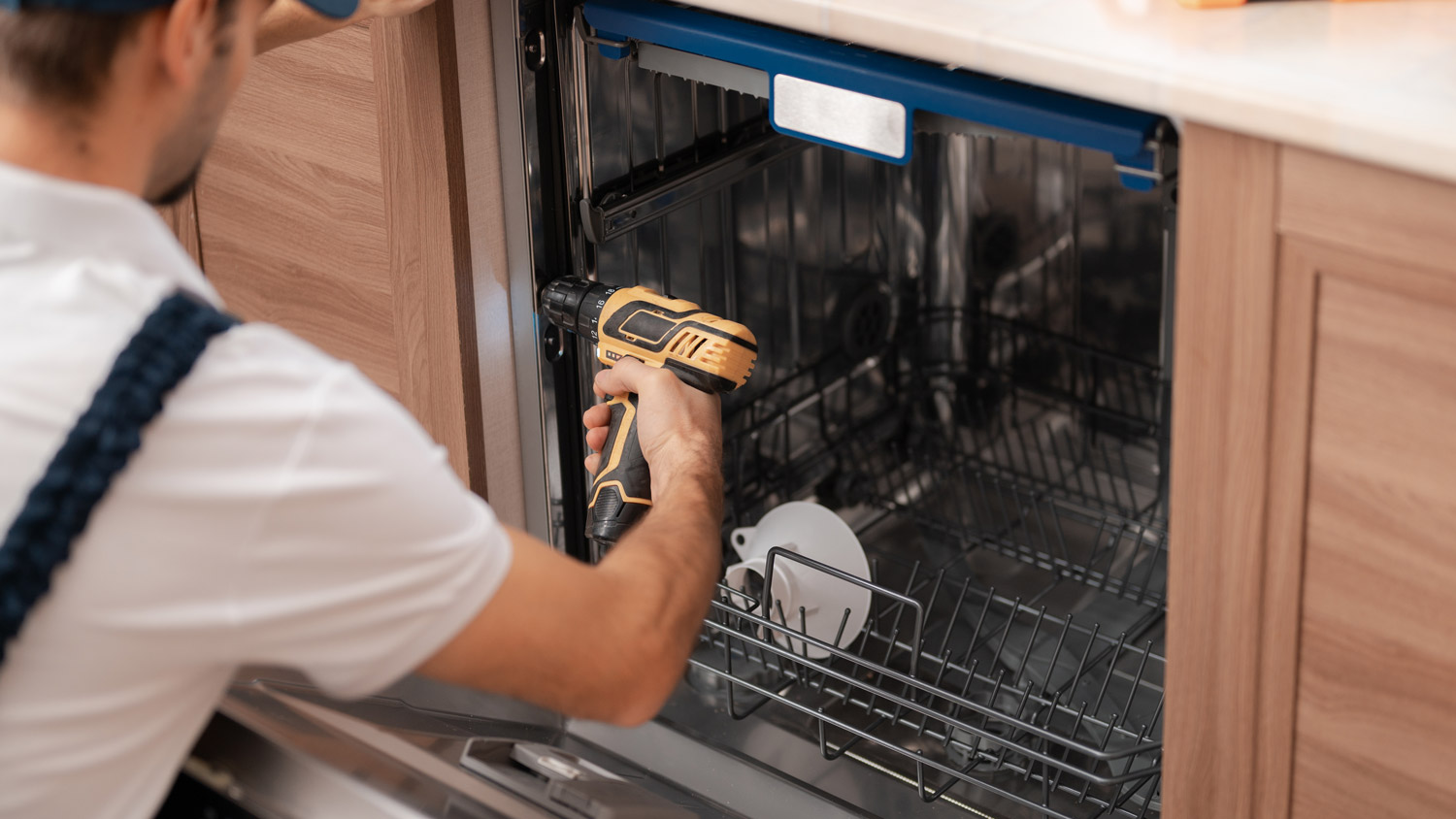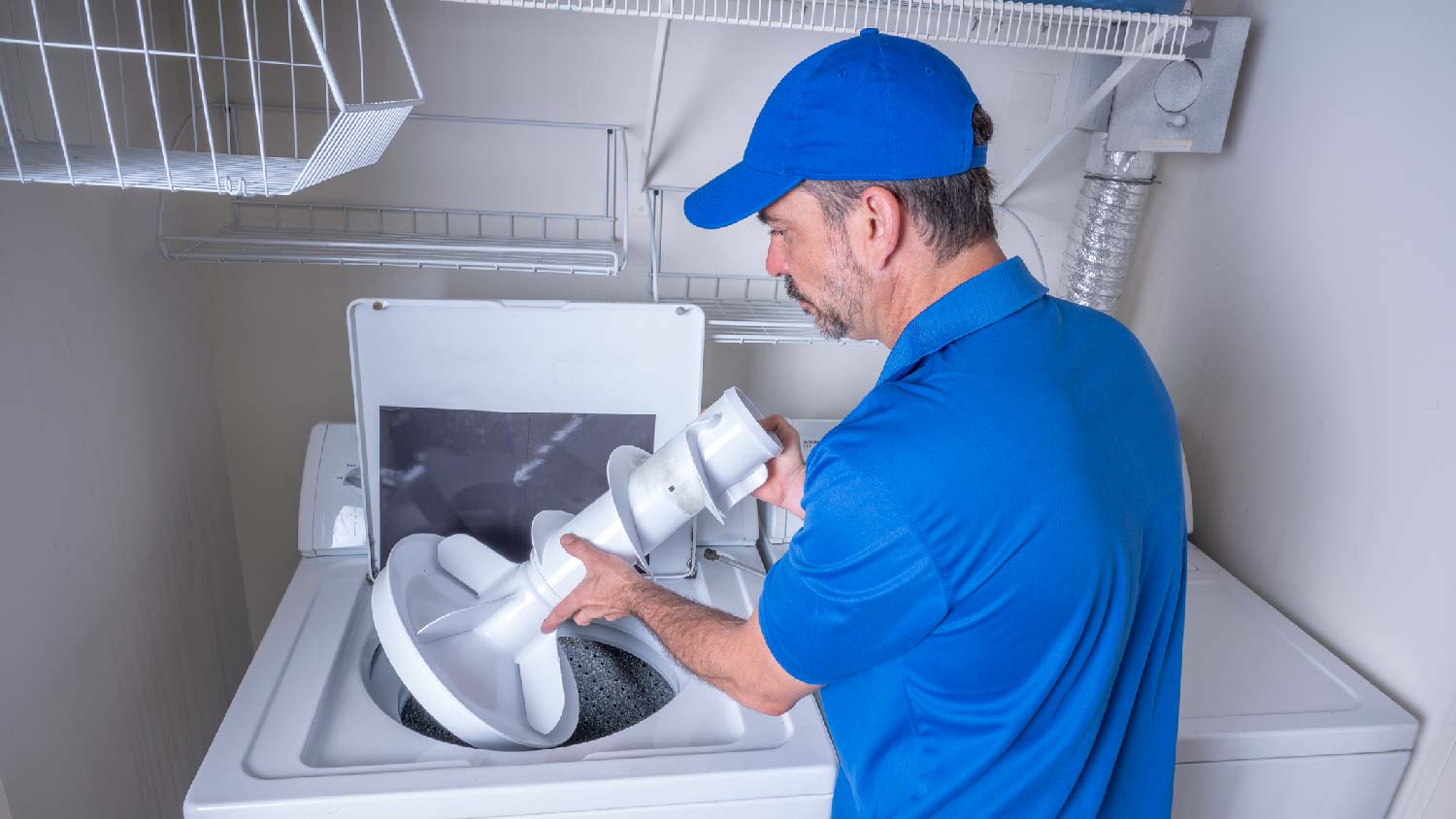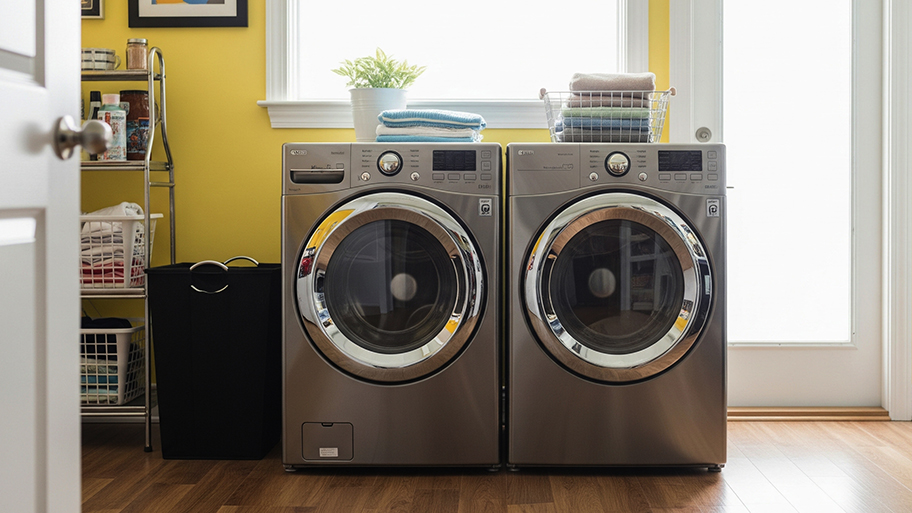
Discover the average dishwasher installation cost, key price factors, and tips to save on your project. Get transparent, expert-backed estimates.
Get things moving again with these troubleshooting steps


Sometimes, the agitator may be obstructed, and removing the obstruction will fix the problem.
If the agitator is not obstructed, unplug the machine and check the different parts.
Call a professional if anything is damaged or you can’t diagnose the problem.
No matter what kind of washing machine you have, the last thing you want is for it to become utterly inoperational when you’ve got a load of dirty clothes to wash. Agitator washers are tough machines that are equally tough on grime, but a range of minor and major problems can result in the washing machine not agitating. We’ll walk you through how to check for common issues, and when it’s time to call in a pro.
It's frustrating when you really need to do the laundry, but your washing machine is not spinning. Why is this happening? It usually comes down to the agitator being obstructed. Missing, broken, or aged washer parts can also cause the machine to malfunction.
The agitator is the vertical spinning post in the middle of the washing machine. It creates powerful friction that effectively battles stains and grime more robustly than other types of washing machines. Like any other mechanical part, agitators can run into problems or eventually wear out with age.
Here’s how to inspect your agitator and drum and determine if it’s safe to DIY the repair or if you need to call a local washing machine repair pro.
First and foremost, unplug the washing machine before touching the agitator or inspecting any parts. If you don’t unplug it from the power source, you risk electrocution and starting an electrical fire, especially if the drum is full of water.
If the washing machine is wired into the wall, check your electrical panel for the fuse connected to it.
After unplugging the washer, try turning the agitator. Depending on the model you have, you might need to remove the top cover or fabric softener dispenser to access the agitator. Try to manually turn it.
It should give you some resistance. If it spins easily with little or no resistance, that's a sign the agitator needs to be replaced. If it won’t move at all, you probably have an obstruction.
If the agitator won’t spin on its own or manually, something could be lodged in the base. Agitator washers are powerful but can be nerfed by blockages. Small laundry items like socks, hosiery, and washcloths can easily get stuck in the bottom of the agitator, causing it to stop spinning. Check the bottom of the agitator for runaway socks or other blockages. If you find something, removing it is likely all that’s needed to get the washing machine back in working order. You can help prevent this in the future by putting these small items in a porous laundry bag.
Under normal circumstances, you should never remove the agitator. But if there's no obstruction at the bottom and it gives normal resistance when you try to push it, chances are you need to diagnose a more complex problem. Check the instruction manual for directions on safely removing the agitator to further inspect it. You may need to unbolt it from the transmission shaft, or use a screwdriver to unscrew it.
After removing the agitator, check it for signs of wear and damage, especially on the splines. You may need a replacement agitator, or other parts.

Look for a tab under the opening of the washing machine. This is the lid switch, and it triggers the motor after shutting the lid. If the switch is broken or missing, this could be a reason why the agitator stopped spinning.
Directional cogs help the agitator move water, and their location will vary by manufacturer. Consult the manual for their location. If you can't access the cogs, or you find them but they're missing, damaged, or rusty, you need to call a local washing machine repair pro.
Depending on the washer model, you may have a coupler that connects the agitator to the transmission. If your washing machine stopped spinning and it also makes a grinding noise during wash cycles, that could be a sign the coupler is damaged. Consult the manual and check if your model has an agitator coupler. Remove it according to the manual, then inspect for damage, rust, and other signs of malfunctioning.
If you tried all of these steps and still can’t diagnose the problem, or you found that a complex part is missing or damaged, it’s time to find a local washing machine repair pro who is authorized to service your particular machine. After you receive a diagnosis and quote, you can determine if your agitator washer is worth repairing or replacing.
From average costs to expert advice, get all the answers you need to get your job done.

Discover the average dishwasher installation cost, key price factors, and tips to save on your project. Get transparent, expert-backed estimates.

Range hoods come in various styles and help keep your kitchen clear of odors, smoke, and grease. Here’s how much it costs to install a range hood by type.

The cost to relocate washer and dryer hookups varies based on location, as well as whether your moving the appliances and adding new hookups. We’ve compiled a full price breakdown here.

Does your washer sound like it wants to leave your house? You can fix this issue in just a few minutes. Keep reading to learn how to balance a washing machine.

Understand the top reasons why your oven smells like gas, the severity of the issue, and how to address the causes before calling a pro.

If your fridge is not cold but the freezer is, you can use these troubleshooting tips to find and address the issue, possibly without paying for repairs.